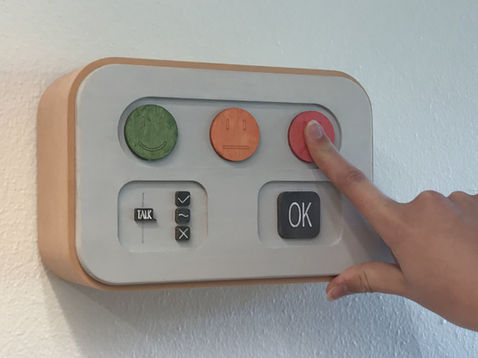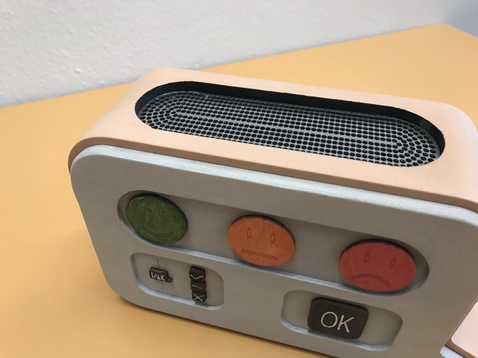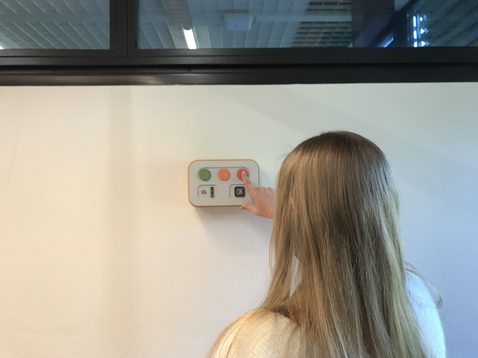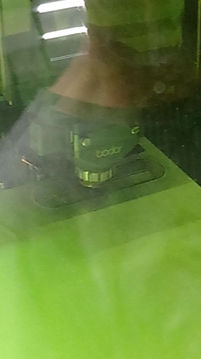Shape Prototype
To give our co-designer an idea of the envisioned physical characteristics of the design, a life-sized model was made using foam and plywood.
With this prototype, the shape, aesthethics and proportions can be tested. The product can be placed in the room of Wendy, testing the dimensions, colors and if it fits her atmosphere. Eventhough the functionality of the physical product was not included in this model, only in the digital interface mock-up, the interactions with the physical product can still be tested.
Continue scrolling to read more about the making of the prototype.
Making the Physical Prototype
In the workplace of the University of Twente, the model was made using mainly foam and plywood. Some laser-cut metal was used to create the effect of the speaker on top of the MoodBabble.
Two of our project members turned a big block of polystyrene foam, some plates of plywood and sheet metal into the final shape of the product.
The base of foam was copy-cut and sanded to perfection. The sunken speaker was milled in the block. The metal part was laser cut from the solid works model and spray-painted chrome to get a nice shiny look. Even though the metal part was slightly too large at first, the part could be altered a bit and it ended up fitting perfectly.
The front and back panels, buttons and switch were all laser-cut out of 4 mm plywood and were also rounded off the edges by using a rotary mill. Then they were sanded off to make everything nice and smooth. After all the sanding, the plywood elements were all painted using acrylic paint.
During the process, some pictures were taken, which you can see in the gallery below.















